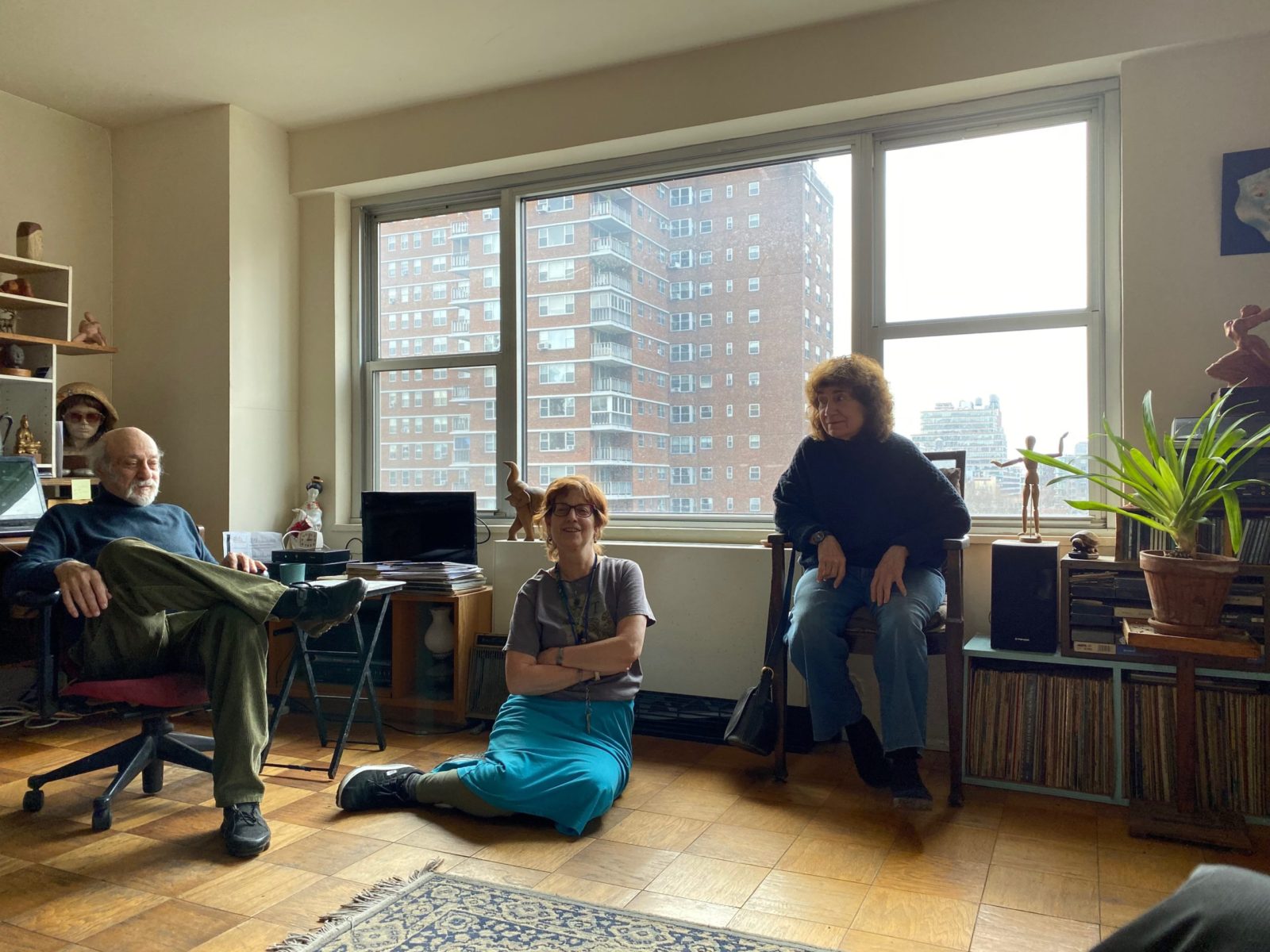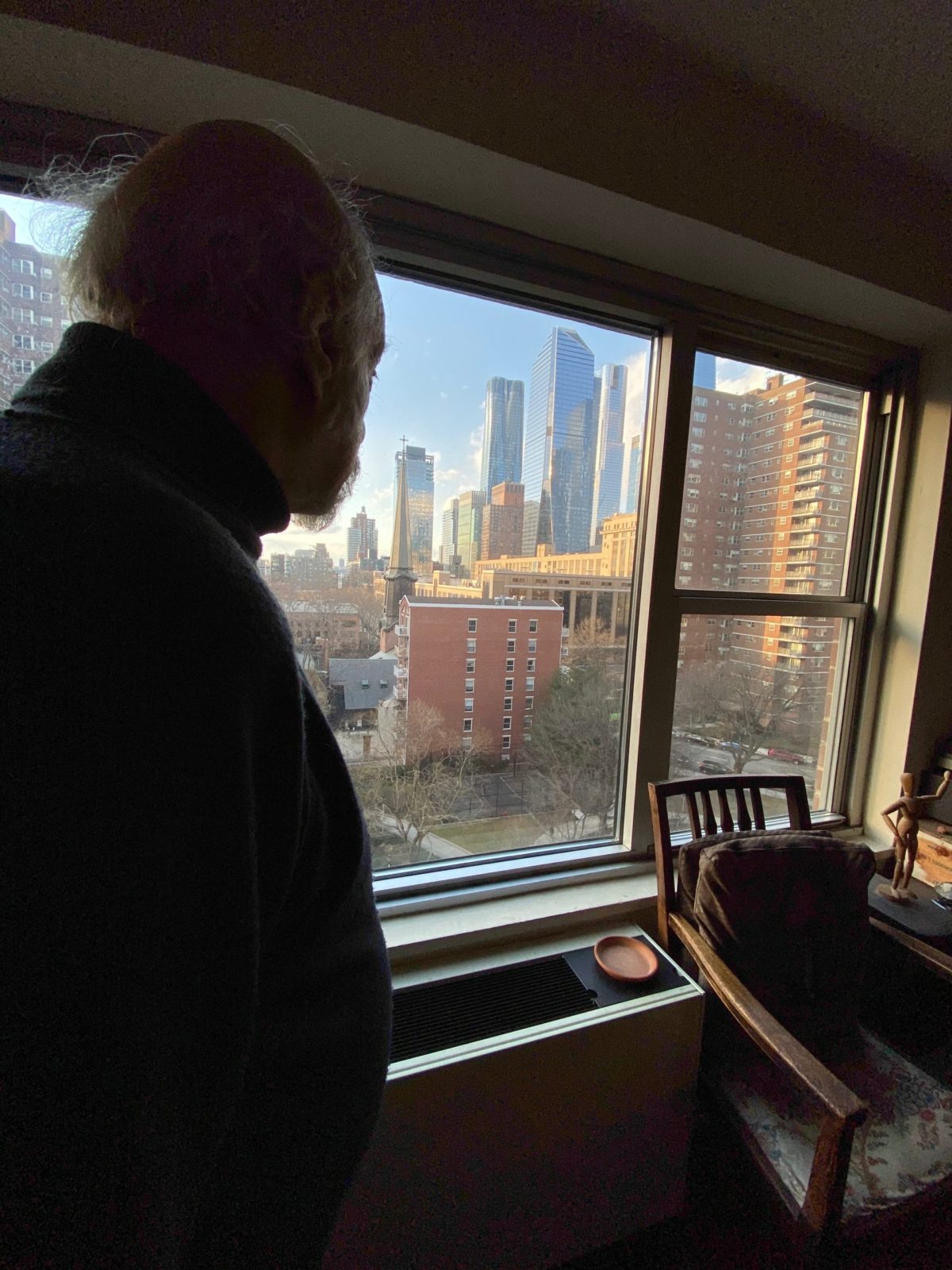
03/01/2020 Featured
Penn South: An Experiment in Affordable Living
By Bennett Kremen with Roger Paradiso
Thirty years ago, my wife put us on a long waiting list and paid a $200 fee for a chance to buy a $25,000 two-bedroom co-op apartment in Penn South, located in Chelsea in New York City. “Two hundred dollars!” I grumbled. “Who the hell ever wins one of those things?” Well, ten years ago—I blush to say—that’s exactly what happened for us. And now I’m one of the luckiest people in town, blessed to live in Penn South—a complex of fifteen 21-story buildings between Eighth and Ninth Avenues, between West 23rd and West 29th Streets, housing some five thousand residents.
$200 a month and park views: for a $25,000 one time payment, an apartment in Penn South is perhaps the best apartment buy in the city. Photo by Roger Paradiso.
The Penn South complex is wide, well-lit, well-maintained, peaceful, and surrounded by trees and shrubs and friendly people quite satisfied with where they’re living. People I know bought a one-bedroom apartment years ago for as little as $7,500. A recent purchase of a two-bedroom apartment for $149,995 reflects the huge increases in real estate taxes but is still far below market rate.
We also pay “rent,” which, in a co-op, is called a maintenance charge. An average studio’s maintenance charge here is $430-$658 a month, for a one-bedroom apartment it’s $552-$899, and for two bedrooms it’s $830-$1,160. For those whose income is above $96,564 there is a sliding scale maintenance charge that cannot be more than 200 percent above what is currently charged.
On May 19th, 1962 Penn South had a grand opening attended by none other than President John F. Kennedy, Eleanor Roosevelt, Nelson Rockefeller, and, most importantly, David Dubinsky, president of the International Ladies Garment Workers Union. It was the members of that union alone, through their weekly dues over years, that ultimately got together the millions of dollars needed to construct these well-made 21-story buildings all around me. They built them proudly, so they could live in dignity close by their work near New York’s famous Garment District—now a shadow of its earlier days—where thousands once labored at sewing machines or wheeled dresses and furs through the crowded streets of the West 20s and 30s. After work they had a short walk back to their homes in Penn South and had a decent life. A few still live here and some of their families are thriving, protected in place by our rent laws and the co-operative Penn South’s by-laws guaranteeing everyone democratic rights and limited nonprofit agreements pertaining to our apartments, and guaranteeing strict affordability now and into the future. “We need that so much today,” said my neighbor Vivian Traiman. “We’ve got so much to protect here, not just our apartments but our cooperative services too—our workout rooms, our art clubs, our community garden.”
There is much more that makes Penn South a comfortable place to live—like the inestimable comfort of our Program for Seniors, respected nationwide. For those families with children, Penn South has two model playgrounds, a wonderful toddler’s room, annual picnics, and a security force keeping an eye on them. The co-op by-laws allow only our residents to elect our board of directors members who receive no salary; they all volunteer. And it’s amazing how efficiently this system is working. Everything’s kept in order, the trees are pruned, the heating is perfect. I’ve seen few other large institutions, banks, schools, or churches doing a better job administrating to the needs of five thousand complicated people in a complicated city. Other old values, many out of style, persist at Penn South. Most striking is the deep desire to keep this community affordable for those that will follow us,
affording them some control over ever escalating rents and neighborhood gentrification. Often, we’ve voted to keep this a limited equity co-op, not allowing it to become private in a wildly booming real estate market that could make many of us millions of dollars. When vacating our apartments, we retrieve only the equity we paid, nothing more. No profit, none, is made in this complex. And, ten percent off the top is not going into someone’s pocket, thus cutting our rents mercifully. That, along with property tax breaks established fifty years ago by the state and city, make Penn South an affordable place to live for working class families and seniors.

And I believe there’s a lesson to be learned here. The failures of NYCHA, and the anguish of productive middle-income people, many fretting over their housing, may be addressed by what’s been worked out at Penn South. Having ownership where we live makes a positive
difference in how we handle ourselves in these building. We are deeply involved in how things are run, and our democratic by-laws help us keep it that way. The city, of course, can’t grant unlimited real estate tax breaks to everyone, but it could create a graduated progressive real estate assessment that could slow down runaway luxury gentrification and, instead of giving Hudson Yards seven billion dollars in tax abatements, could make grants available to those whose incomes are modest, and to middle class individuals as well, for setting up many places like Penn South.
Yes, on a bright day, when I’m feeling most kindly toward New York, I truly wish all in our hard-driving city could live as we do at Penn South. As I look out on my terrace at the recent newcomer to the neighborhood, Hudson Yards and all their mega expensive apartments, I thank God, my wife, and the International Ladies Garment Workers Union for this wonderfully affordable place to live in Chelsea.
